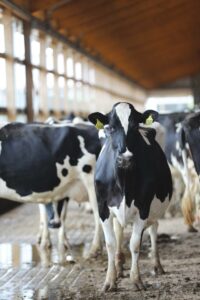Farmers evaluating corn silage now have an updated and more precise tool to guide their decisions. The MILK Index, developed at the University of Wisconsin nearly 30 years ago, recently underwent a significant update to better reflect modern dairy farming needs.
“The MILK Index provides one comprehensive value that predicts how a given corn silage can support milk production,” explained Luiz Ferraretto, Assistant Professor and Extension Specialist in Ruminant Nutrition at UW-Madison. “This simplifies decisions for farmers by accounting for multiple nutrient factors and their digestibility.”
The updated model incorporates cutting-edge data and new testing methods, such as the use of undigested neutral detergent fiber (uNDF), which highlights the digestible portion of fiber. “This wasn’t available when the original model was created,” Ferraretto noted. “We’ve also improved starch digestibility predictions, ensuring a more accurate reflection of silage quality.”
Transitioning to the new MILK 2024 model, however, comes with changes. Farmers might notice lower milk values compared to the older MILK 2006 version. “This doesn’t mean hybrids have declined in quality,” Ferraretto emphasized. “Rather, modern cows produce milk with more components, like higher fat content, which requires more energy. The updated equations reflect these advances.”
The MILK Index also helps farmers tailor decisions to their specific conditions. Ferraretto advised, “When comparing hybrids, ensure they’re grown under similar conditions and analyzed by the same lab. This consistency helps avoid misleading conclusions.”
For farmers aiming to maximize nutritional value, the MILK Index is best used alongside other resources. “The goal is to maintain high-quality silage that supports high-forage diets while aligning with herd goals,” Ferraretto said. He added, “It’s also valuable for evaluating practices like chopping height, maturity, and population, which all impact nutrient composition.”
The tool is available as a downloadable spreadsheet from the University of Wisconsin Extension website, alongside detailed guides and articles. “This updated MILK Index empowers farmers to make informed choices,” Ferraretto concluded. “With better data, they can boost their herd’s productivity and profitability.
